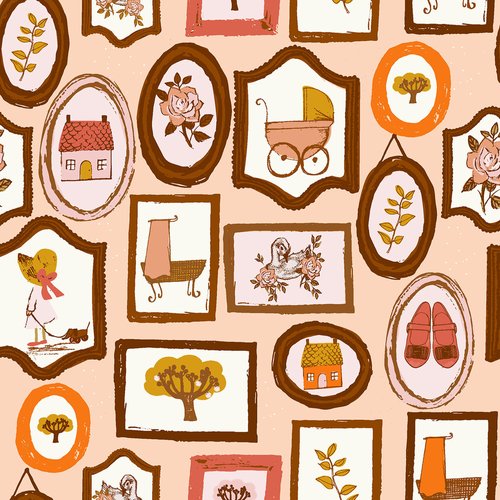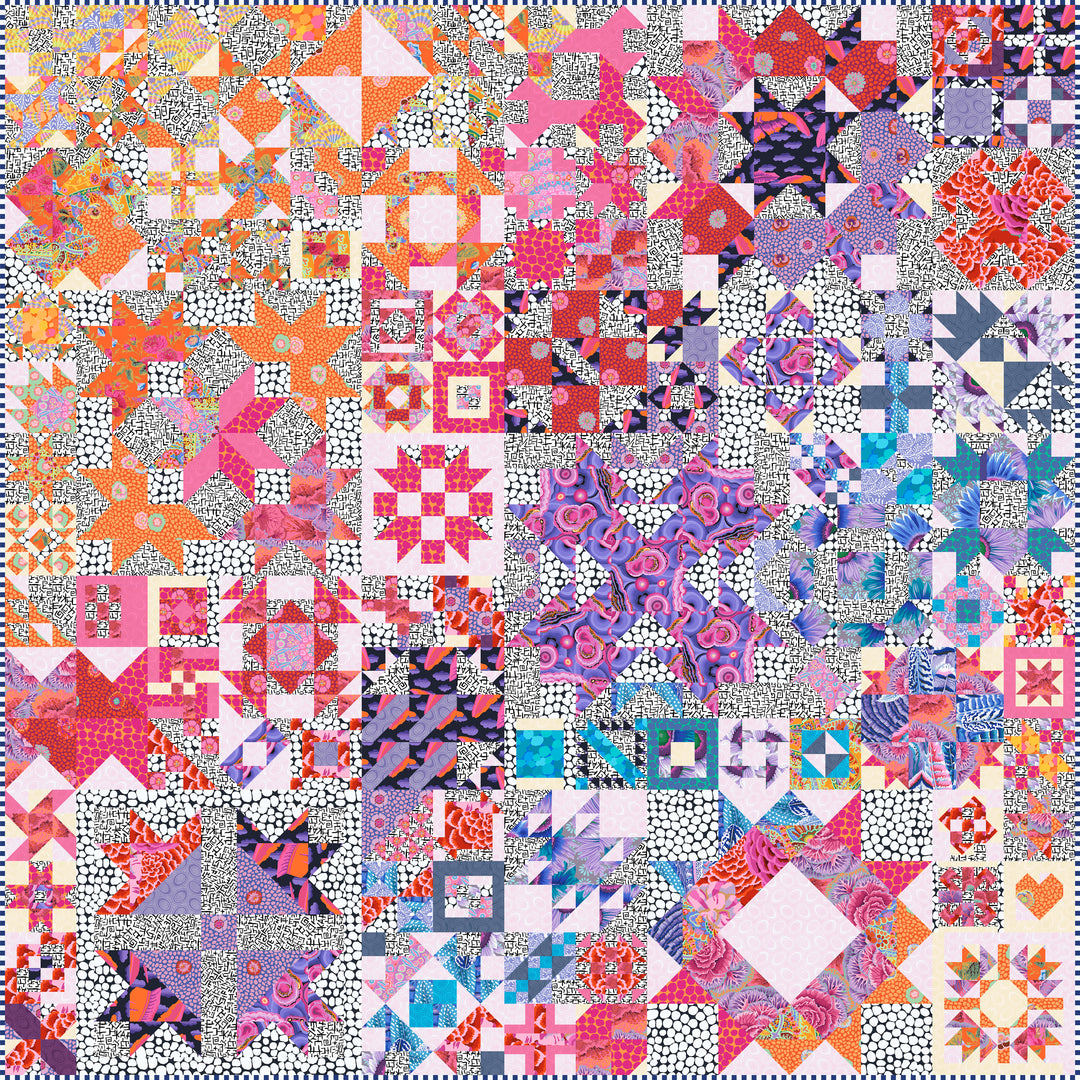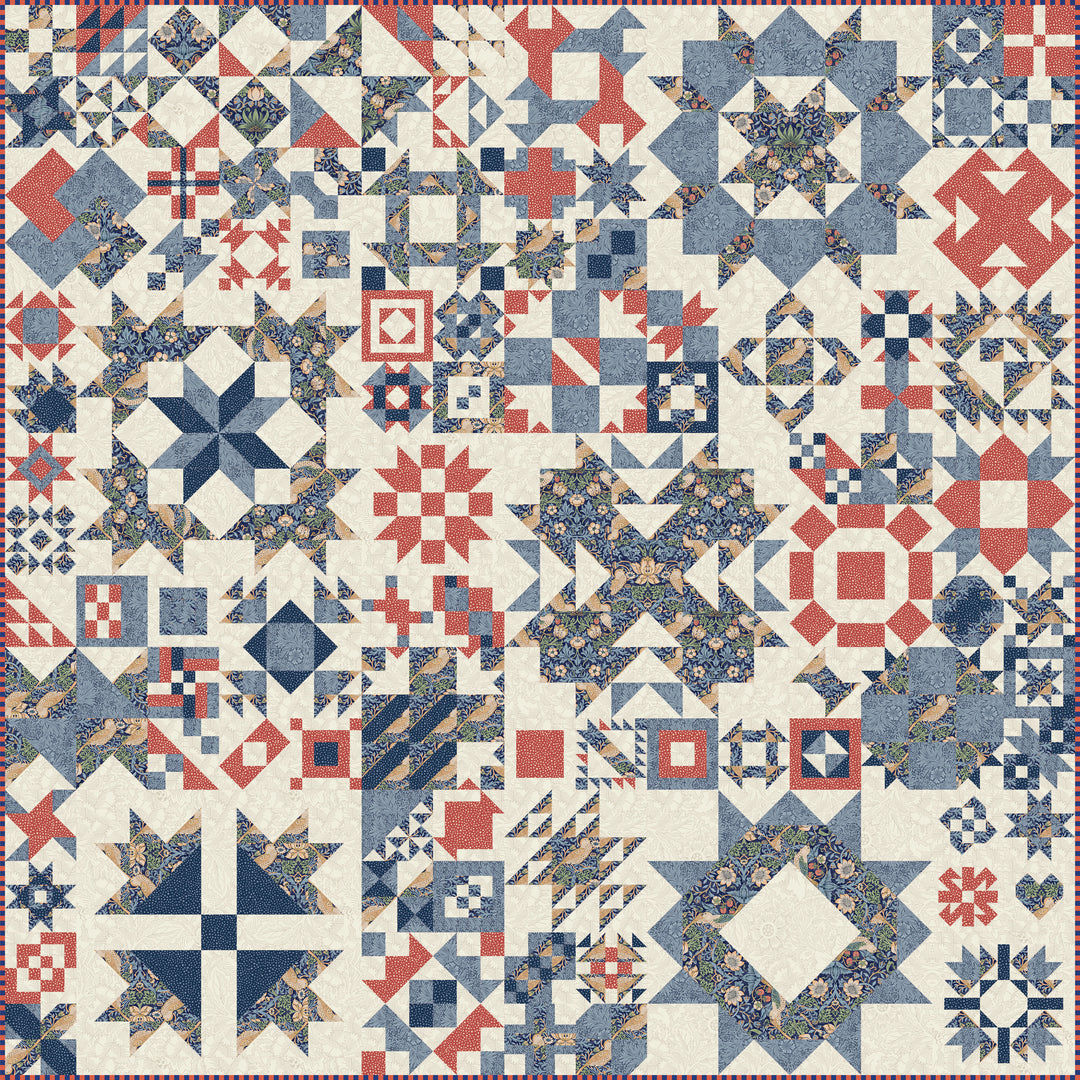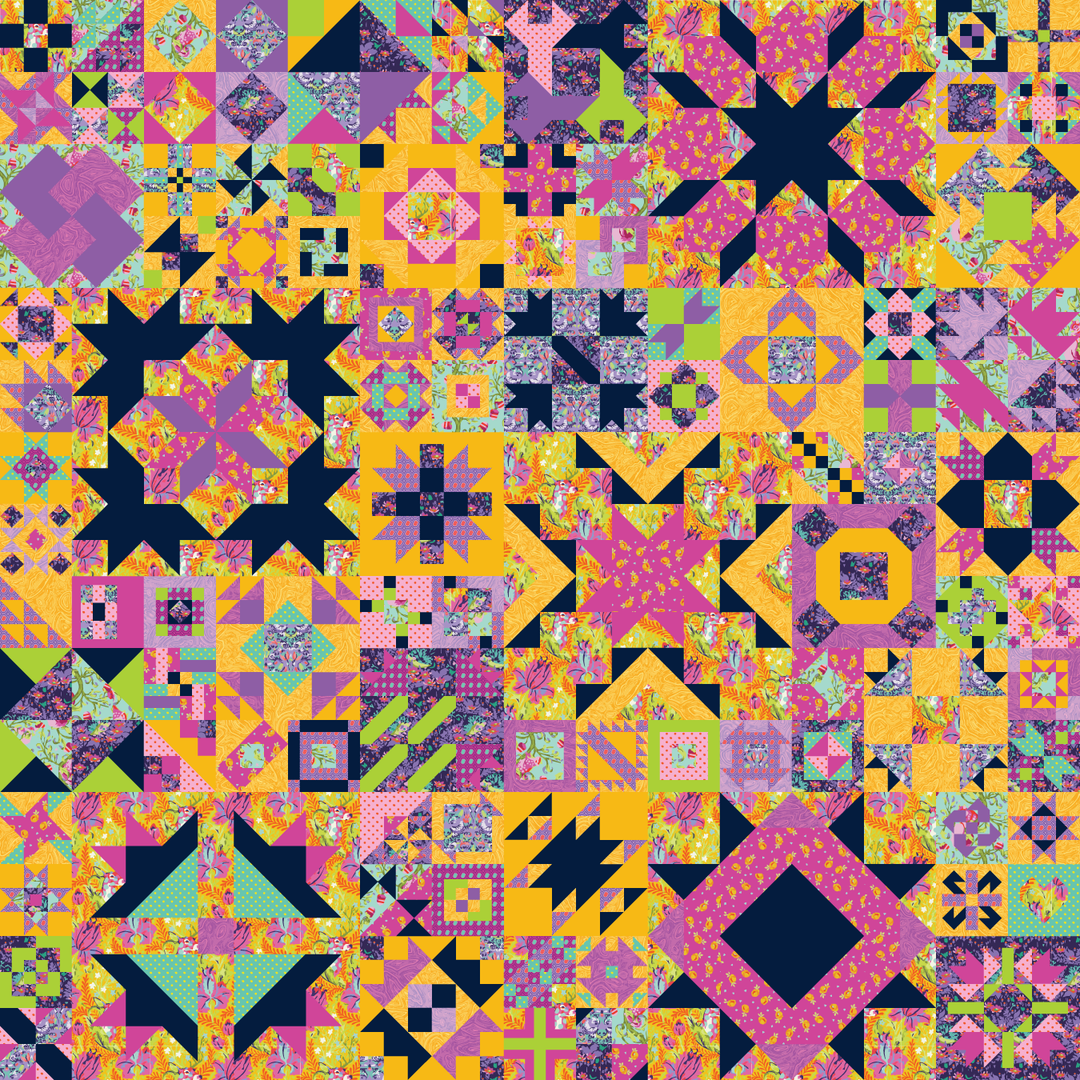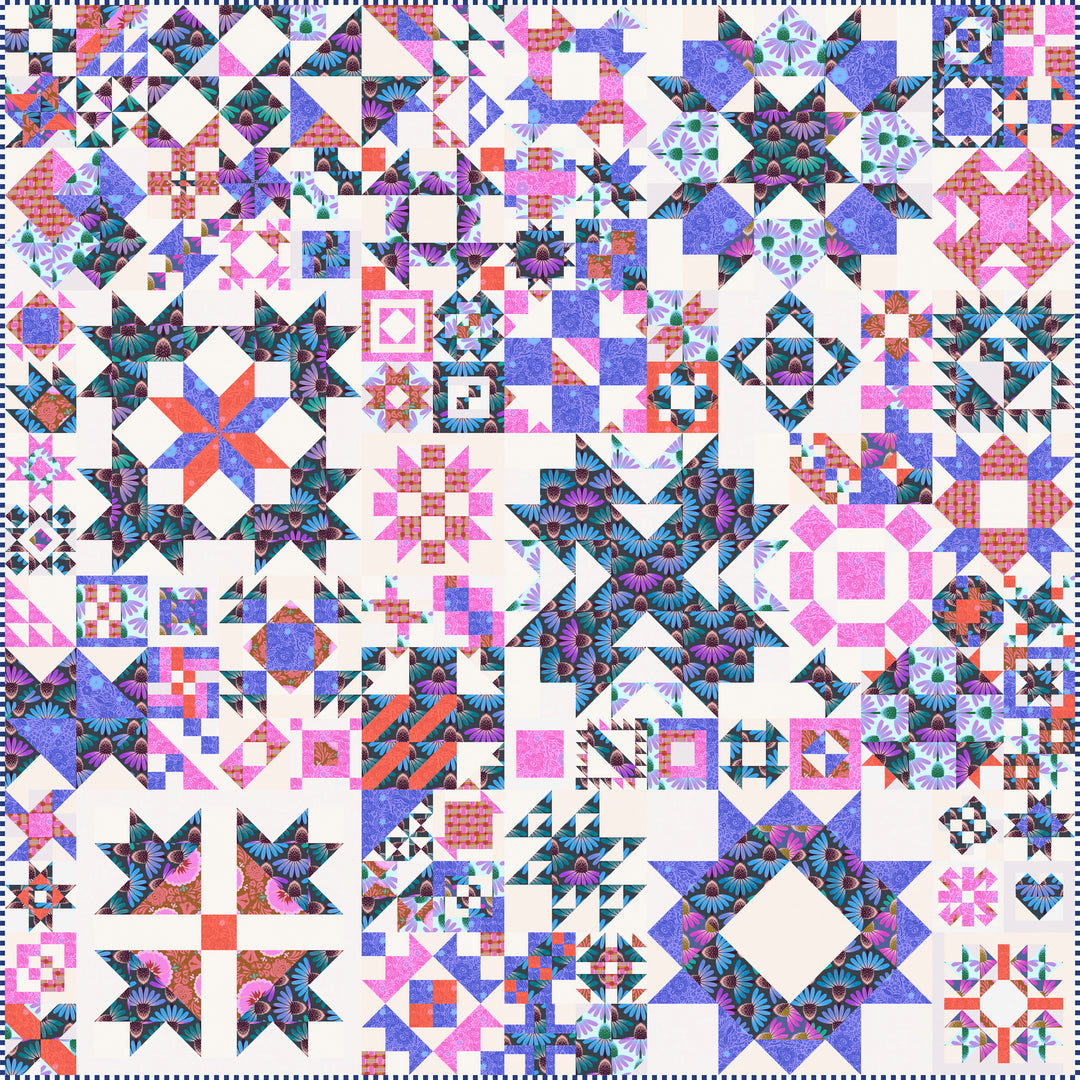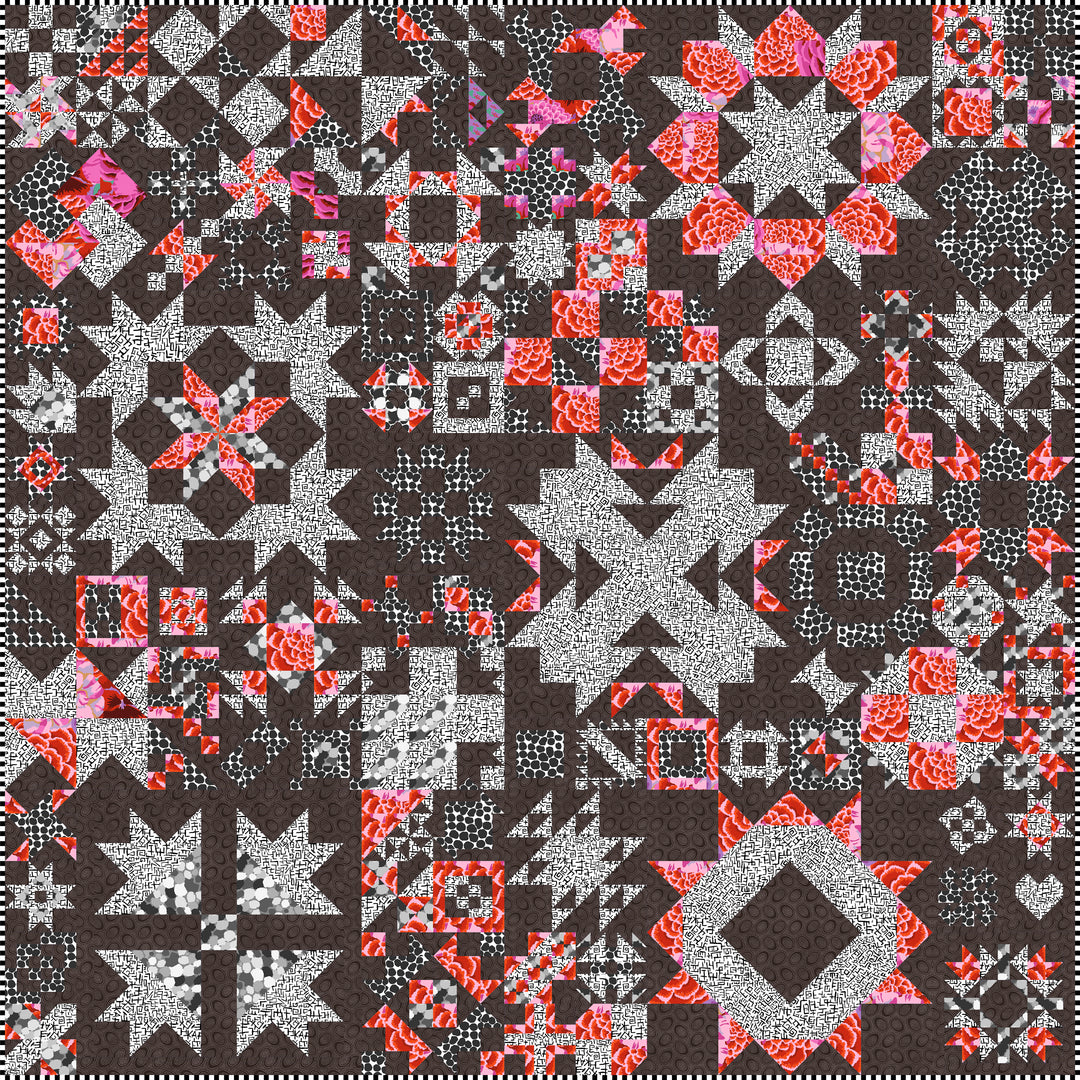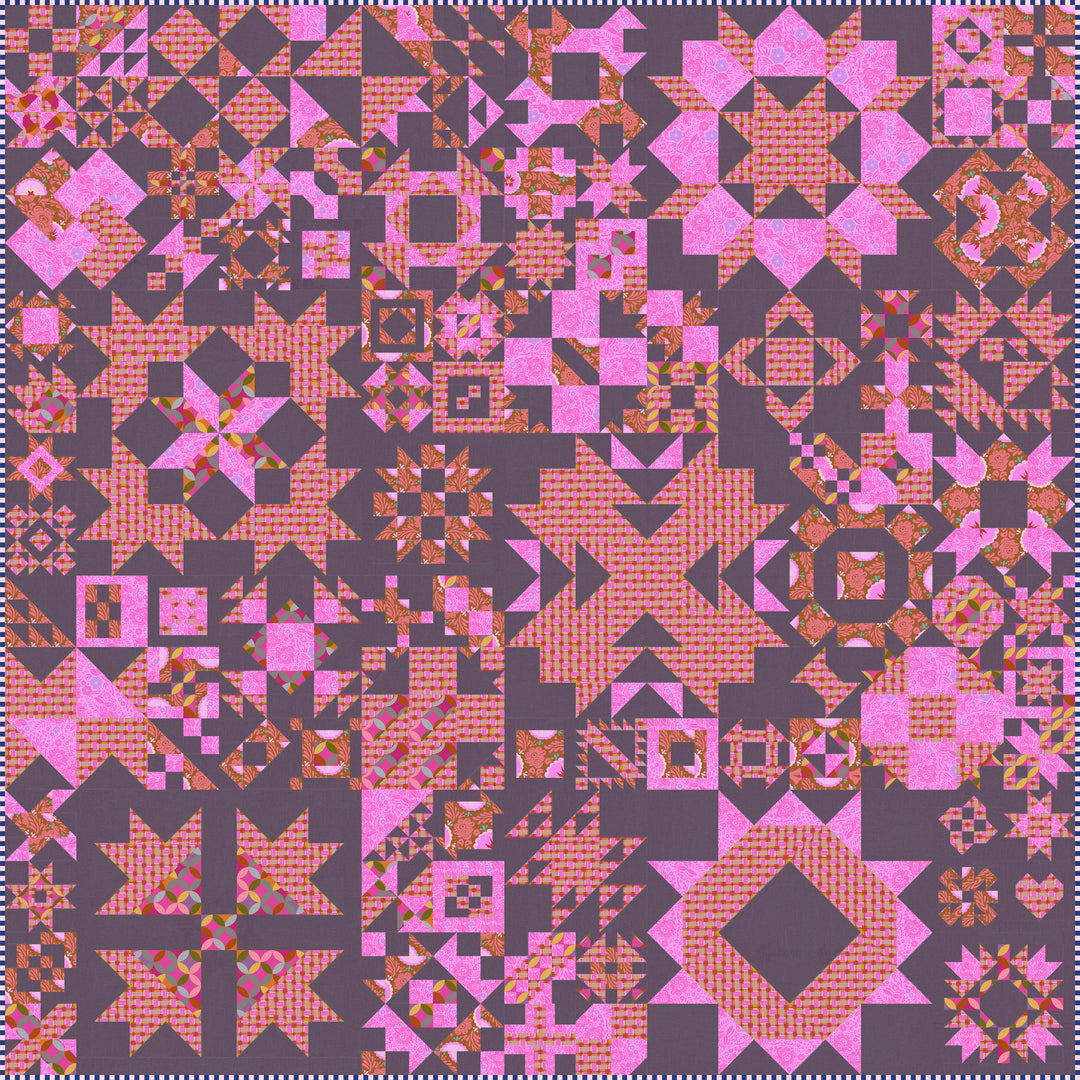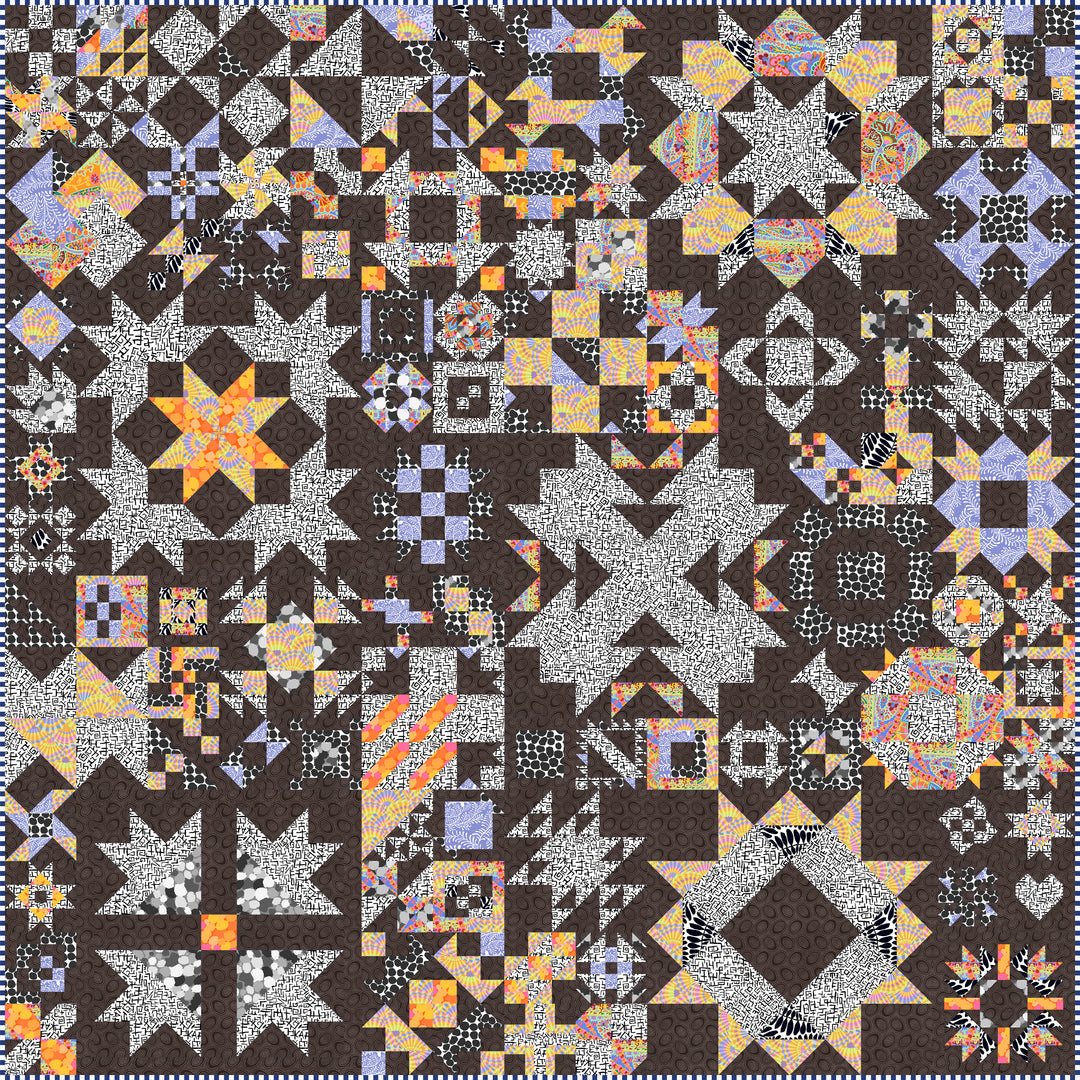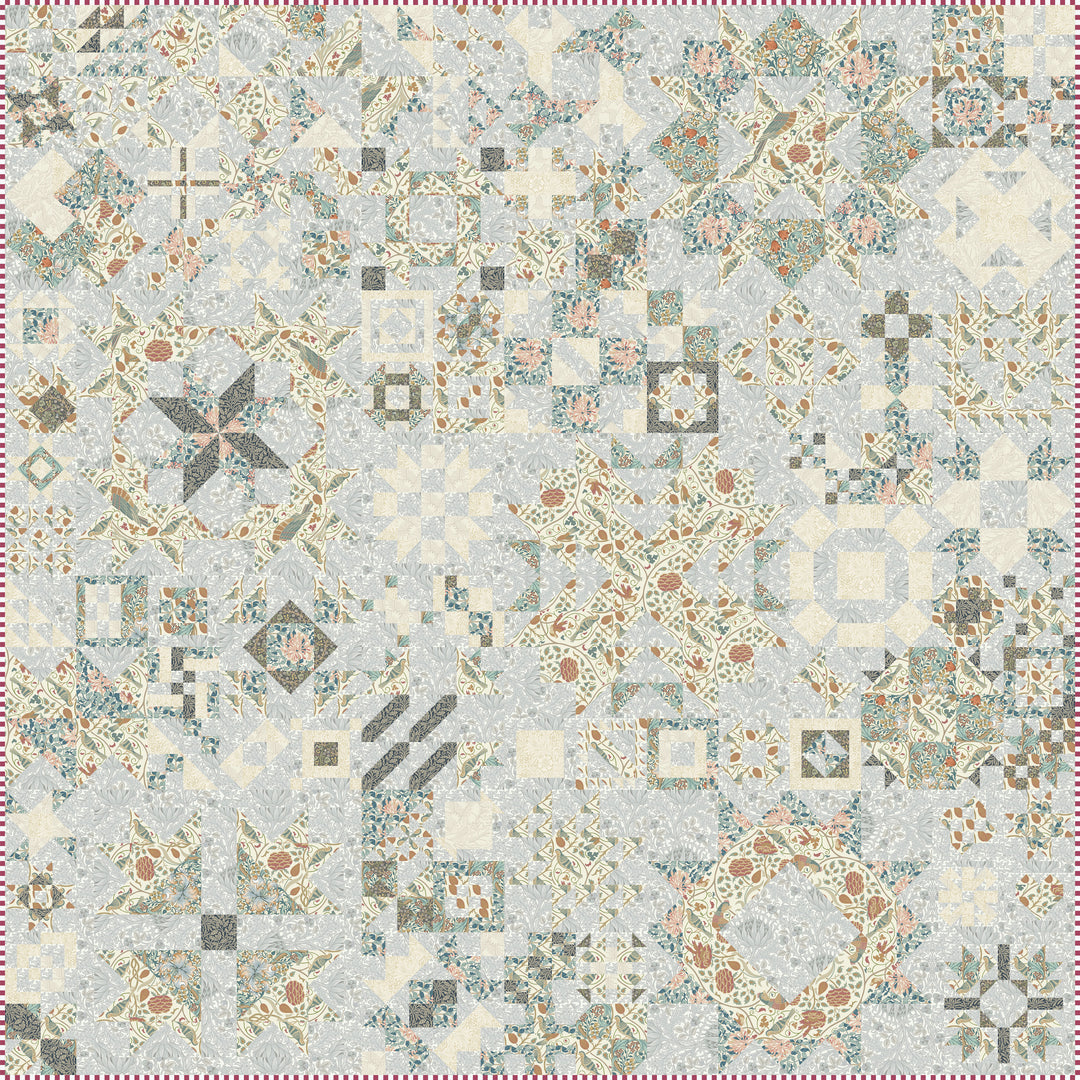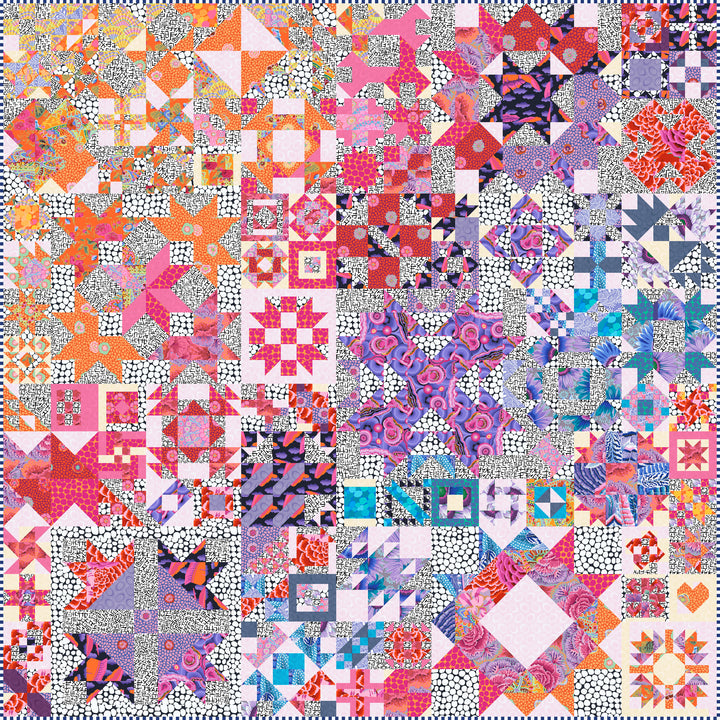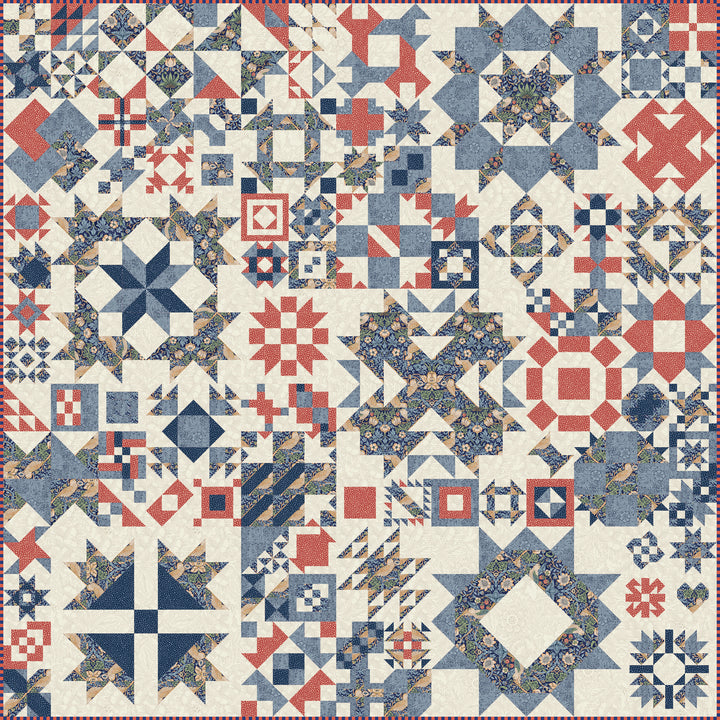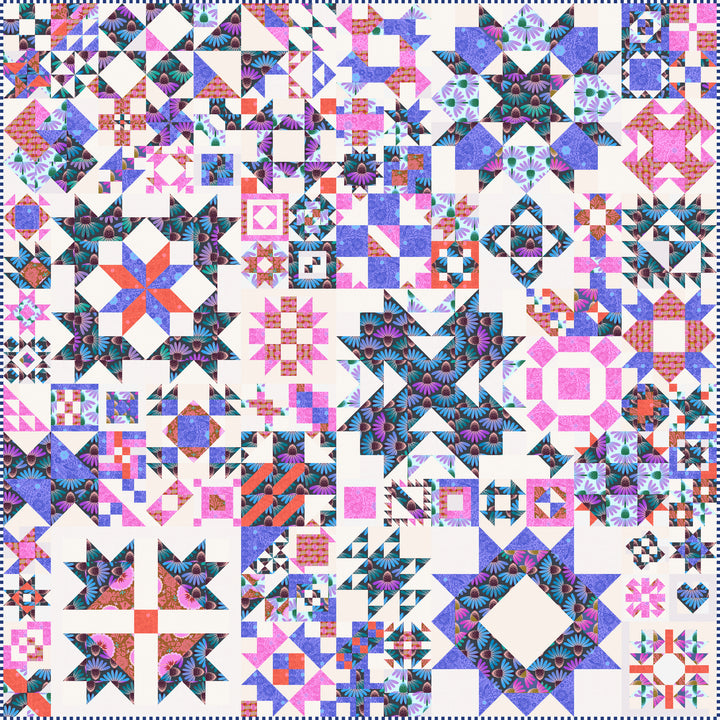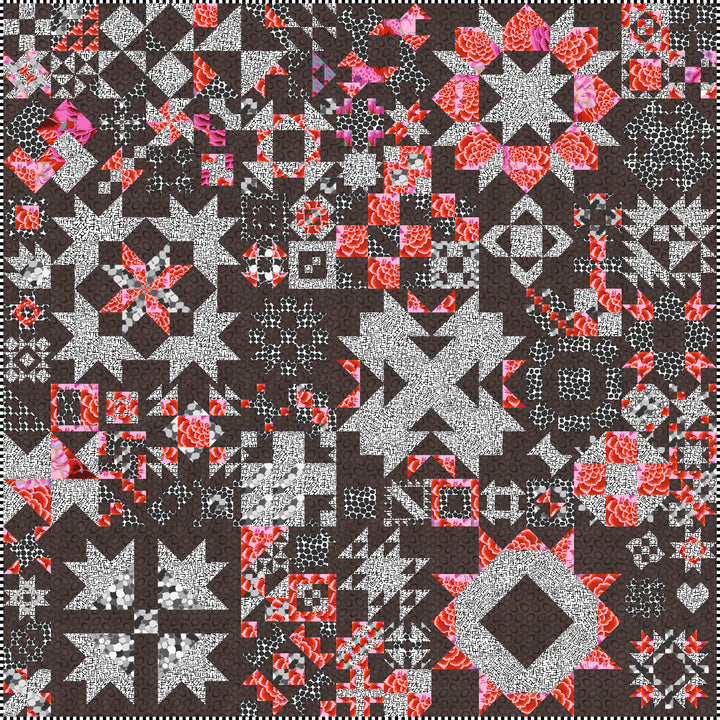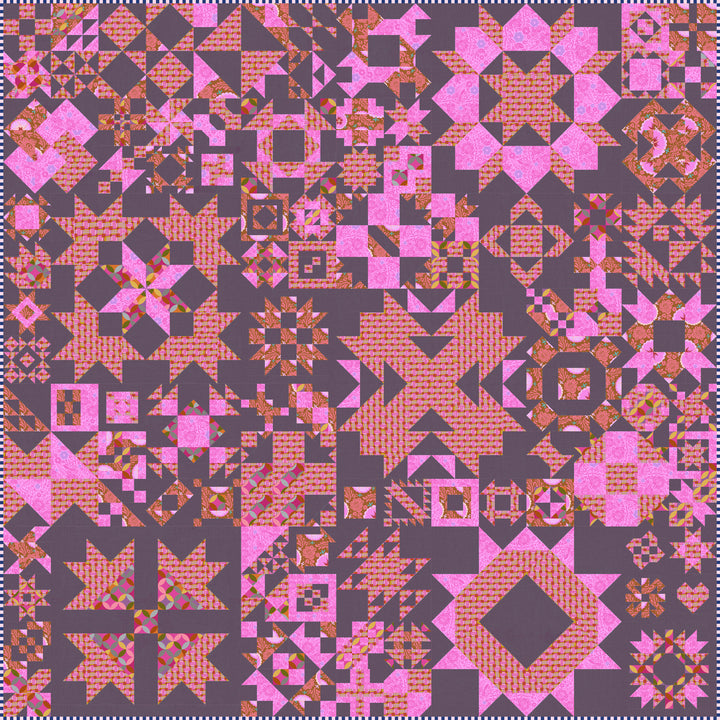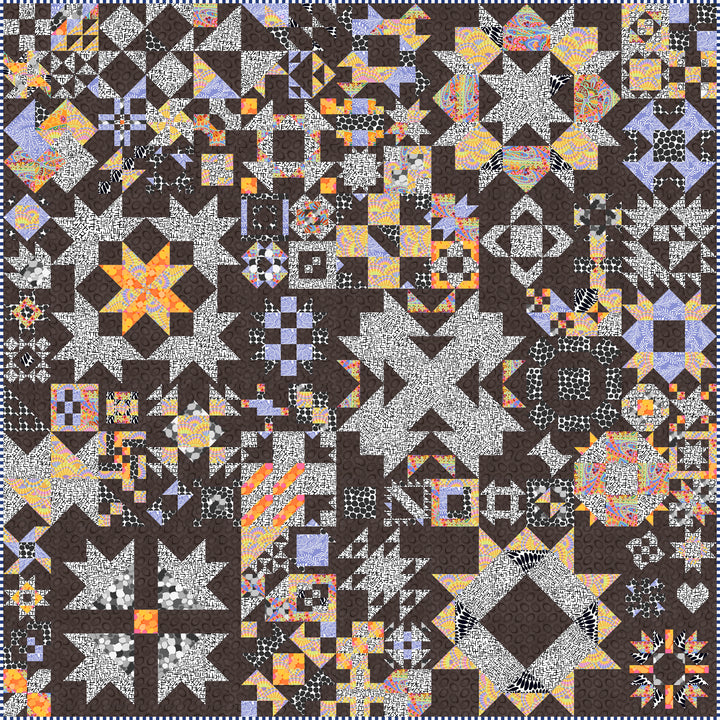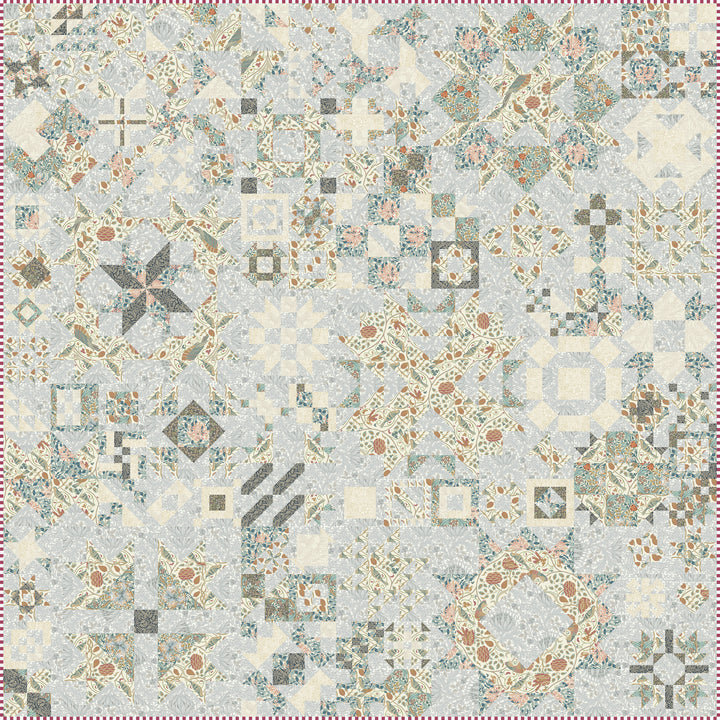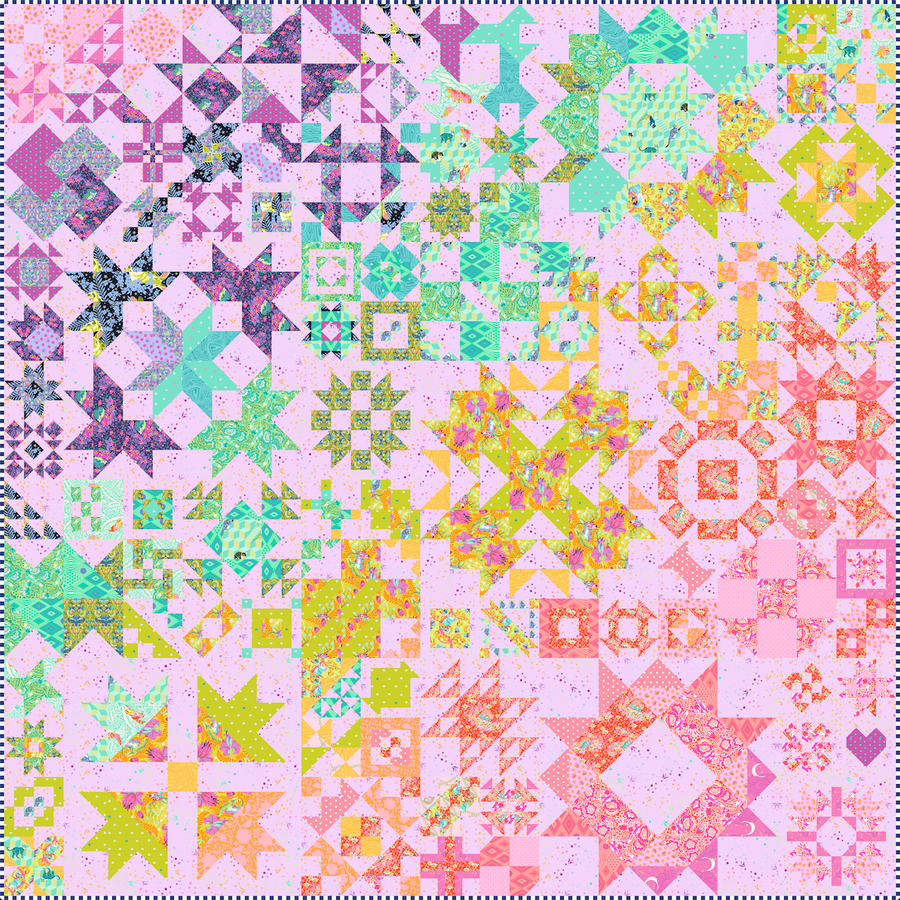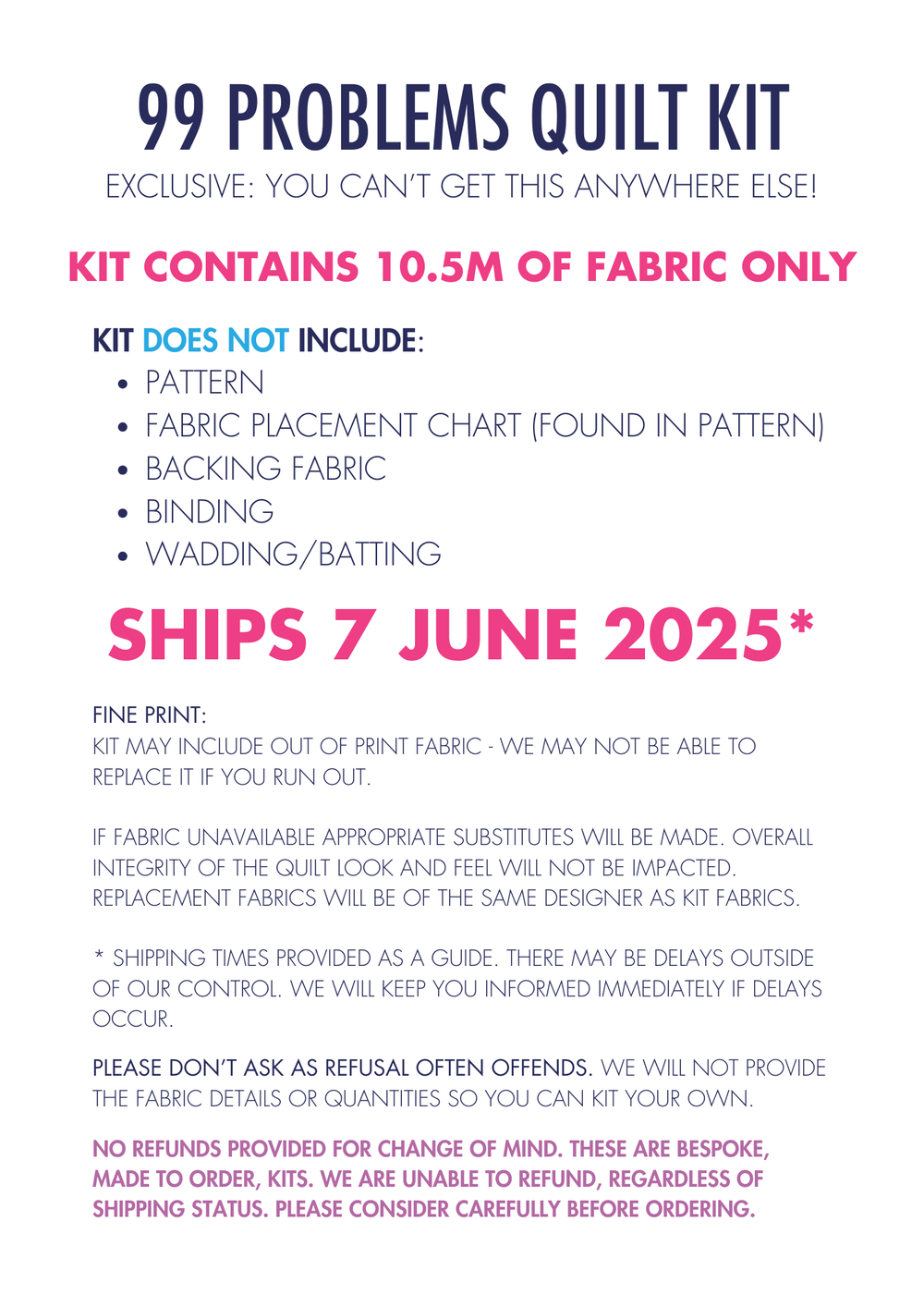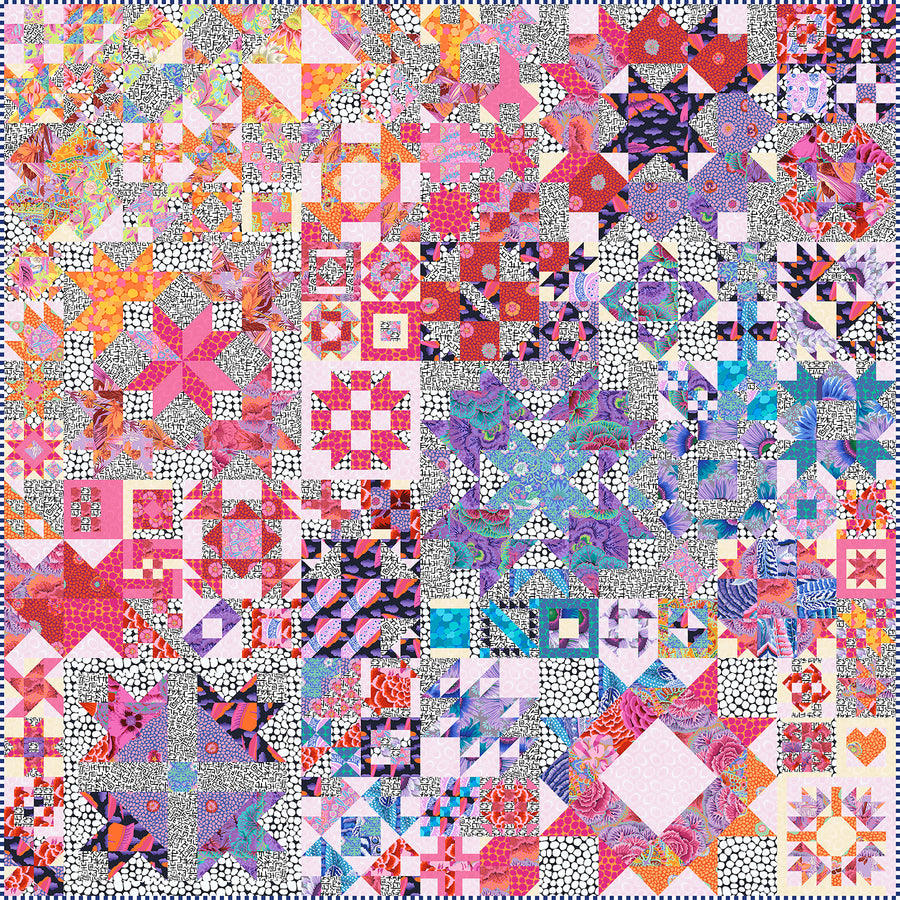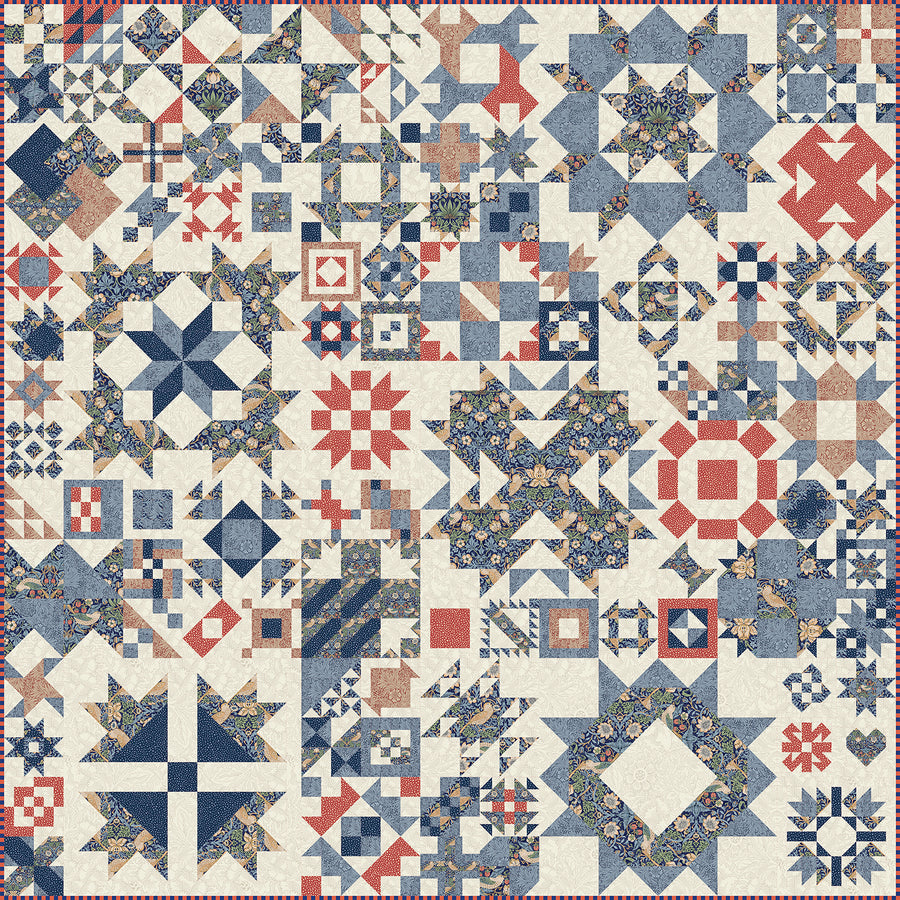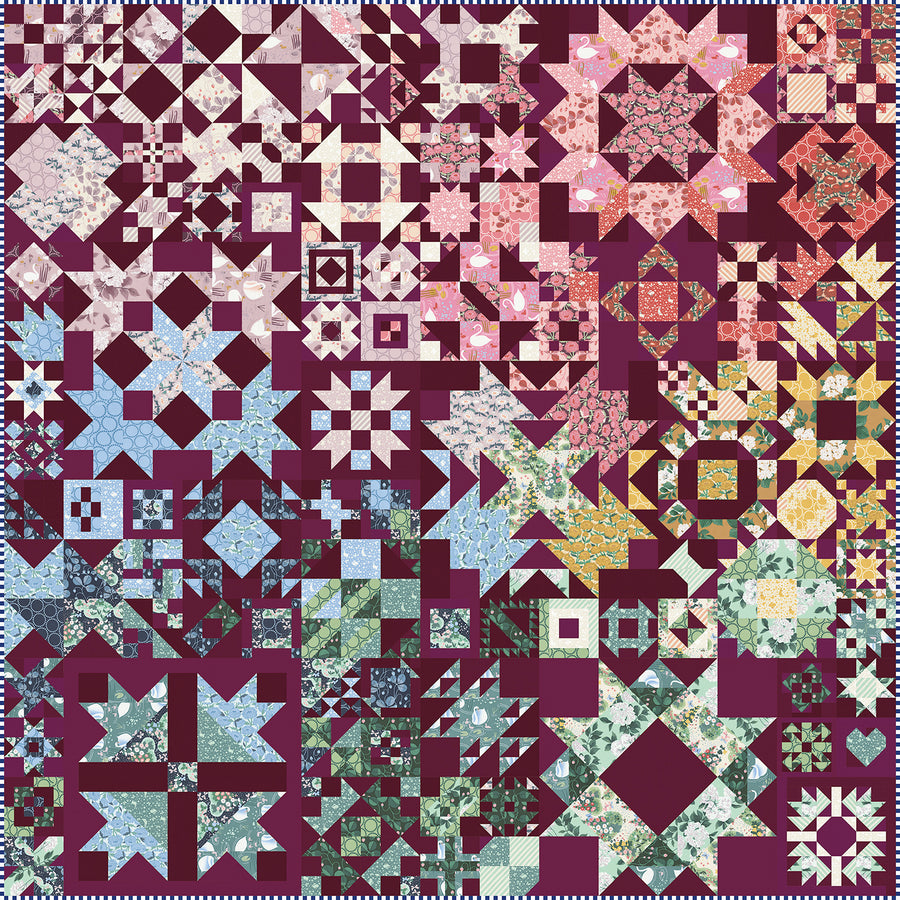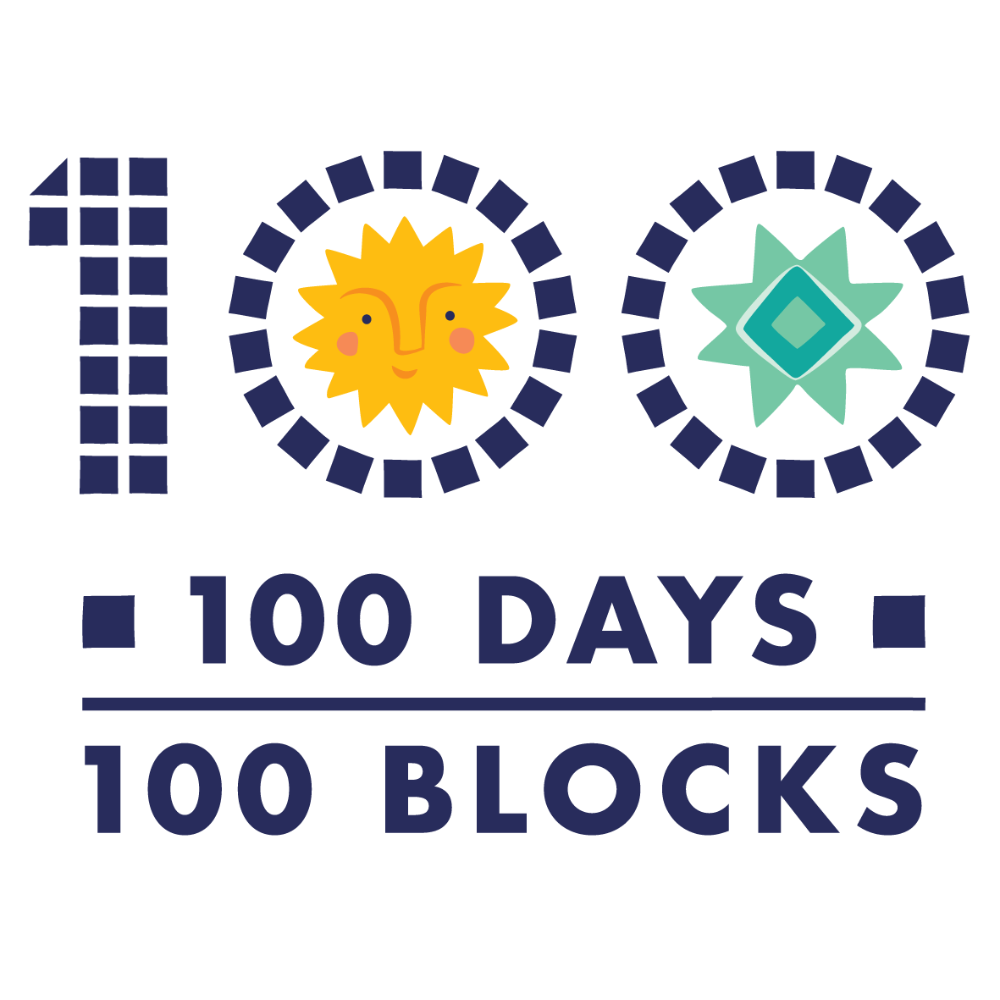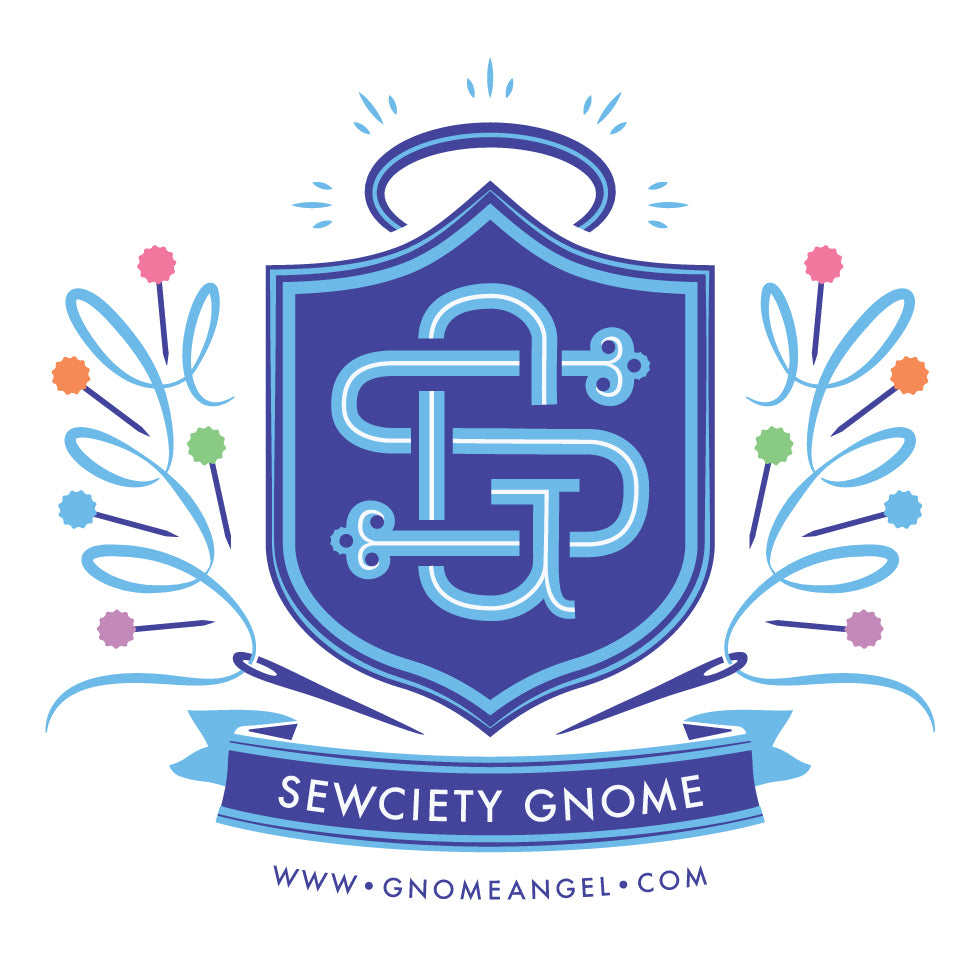Make Bigger Flying Geese-type Triangles
You need a large triangle and a complementary small triangle to make Flying Geese units. Sets A and B include triangle templates that can be used to make three sizes of Flying Geese each, but sometimes you need an even bigger size. You can use our Flying Geese Ruler, Product #8022.

...or you can use this trick for cutting triangles that match templates 2 (Set A) and 9 (Set B). Follow the same idea for making bigger triangles with templates #68 (Set L), #73 (Set M), #80 (Set N), and #94 (Set Q). The Flying Geese Ruler is marked for 2+2, 9+9 and 94+94, and can be used to cut Flying Geese units from 3" to 5" in half-inch increments.
In many block patterns, it is quite common to see two right angle triangles that have been cut from the same fabric and sewn together, back to back, you might say. Often that seam can be eliminated. Look at the 12-inch Dutchman's Puzzle, for example:

For example, in many of the 12" (30.5 cm) or 16" (40.6 cm) blocks in Volume 4 the largest right angle triangle in the set must be flipped to create larger unseamed triangles. The good news is that the uniquely engineered corners make some clever tricks possible.
For some blocks, larger units can be made by cutting half of a piece, flipping the template and cutting again.

Make the first diagonal cut.

Flip or rotate the template and align it with the straight edges and the corner angles and make the second cut. Pay careful attention to the match points as that is how the adjustment is made to eliminate seam allowances.

On different shapes, a different section is the key position for matching; usually it is a corner.
Excerpted from the Encyclopedia of Patchwork Blocks, Volume 1 published by Michell Marketing, Inc. ©1995 Martha G. Michell


